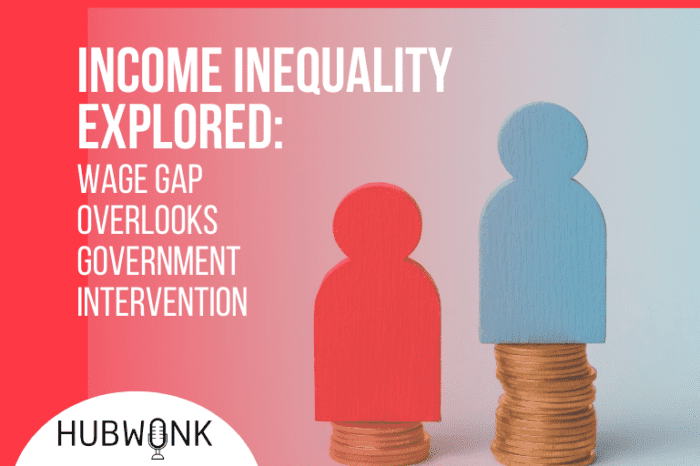Income Inequality Explored: Wage Gap Overlooks Government Intervention
/in Economic Opportunity, Featured, Podcast Hubwonk /by Editorial Staff
This week on Hubwonk, host Joe Selvaggi talks with John F. Early, economist and author of the newly released book, The Myth of American Inequality, about the history of income inequality, its true size, and trends. They also discuss how census data used in policy decision-making misses nearly all the effects of government intervention and distorts the truth about the income American families actually have to spend.
Guest:
 John F. Early is a mathematical economist, president of the consultancy Vital Few, LLC, and an adjunct scholar at the Cato Institute. Early has also served twice as assistant commissioner at the Bureau of Labor Statistics where he directed the statistical design, economic analysis, and survey operations for the Consumer Price Index (CPI), the Consumer Expenditure Survey (CES), Point of Purchase Survey (POPS), and estimates of pre-retail price changes. He is the co-author of the forthcoming The Myth of American Inequality with Senator Phil Gramm and Robert Ekelund (Rowman & Littlefield, September 2022). Their book expands on Early’s Cato Institute research that found that official government statistics substantially overstate income inequality and poverty. Early has published more than 70 other papers, working papers, and articles at the Juran Institute, Encyclopedia of Statistical Sciences, National Bureau of Economic Research, Journal of the American Statistical Society, the Brookings Institution, and the American Society for Quality. Early holds a BS in economics and political science from Rice University and an MA in international political economy from the University of Wisconsin-Madison.
John F. Early is a mathematical economist, president of the consultancy Vital Few, LLC, and an adjunct scholar at the Cato Institute. Early has also served twice as assistant commissioner at the Bureau of Labor Statistics where he directed the statistical design, economic analysis, and survey operations for the Consumer Price Index (CPI), the Consumer Expenditure Survey (CES), Point of Purchase Survey (POPS), and estimates of pre-retail price changes. He is the co-author of the forthcoming The Myth of American Inequality with Senator Phil Gramm and Robert Ekelund (Rowman & Littlefield, September 2022). Their book expands on Early’s Cato Institute research that found that official government statistics substantially overstate income inequality and poverty. Early has published more than 70 other papers, working papers, and articles at the Juran Institute, Encyclopedia of Statistical Sciences, National Bureau of Economic Research, Journal of the American Statistical Society, the Brookings Institution, and the American Society for Quality. Early holds a BS in economics and political science from Rice University and an MA in international political economy from the University of Wisconsin-Madison.
Get new episodes of Hubwonk in your inbox!
WATCH:
Read a Transcript of This Episode
Please excuse typos.
Joe Selvaggi:
This is Hubwonk. I’m Joe Selvaggi.
Joe Selvaggi:
Welcome to Hubwonk, a podcast of Pioneer Institute, a think tank in Boston. The concern that income inequality is wide and getting wider is at the foundation of both the policy and rhetoric of the political left senator and former presidential candidate. Bernie Sanders distilled out the spirit of his views when he stated that quote, The obscene and increasing level of wealth and income inequality in this country is immoral, unAmerican, and unsustainable. Indeed, census data estimates that the income at the top fifth of Americans exceeds that of the bottom fifth by 16.7 times. And the percentage of those living in poverty has not changed since the Great Society programs of the 1960s. But a closer look at the income data, one that accounts for money that comes from government in the form of transfer payments and goes to government in the form of taxes, tells a very different story.
Joe Selvaggi:
A recent indication that measurements of inequality may be deeply flawed was evident when during the Covid pandemic, a 50% increase in direct government payments to citizens over two years revealed neither a measurable increase in income in the families in the lowest fifth, nor any decrease in poverty. Another warning sign, our current income measurements are flawed, is that families in the bottom fifth spend twice their estimated census earnings. Both those in the top fifth spend half the income the census claims they earn. If in fact, income inequality measurements are so disconnected to the actual income Americans have to spend, how come voters take seriously either the fiery rhetoric of opportunistic politicians or the well-intentioned recommendations of concerned policy makers? My guest today is John Early, a mathematical economist and adjunct scholar at the Cato Institute, who is twice served as Assistant commissioner at the Bureau of Labor Statistics.
Joe Selvaggi:
Mr. Early is co-author, along with Senator Phil Gramm and Robert Eckland of the newly released book, The Myth of American Inequality in which he examines the substantial errors in the way income is measured. He will share with us how the way in which we measure inequality distorts its magnitude and historical direction, and lease policy makers with little or no feedback signals with which to measure the success of their interventions. We’ll also discuss the dangers of inaccurate income inequality measurements on the voting public when redistributive policies animated by desire to mitigate rising income inequality are seen to discount the value of those who work and pay taxes and overlook the benefits given to those who do not. When I return, I’ll be joined by economist and author Mr. John Early. Okay, we’re back. This is Hubwonk. I’m Joe Selvaggi, and I’m now pleased to be joined by mathematical economist and author of the new book, The Myth of American Income Equality, John Early. Welcome to Hubwonk, John.
John F. Early:
Glad to be here, Joe. Look forward to this discussion.
Joe Selvaggi:
Wonderful. Well, congratulations on the release of your new book. It’s a very exciting book, a very provocative book. I enjoyed reading it. Now it challenges some foundational principlesfor policymakersnamely that there’s a huge divide between the income enjoyed by the top and bottom earnersand that gap is getting wider. But before we get into the nitty gritty of the findings of your book explain to our audienceI don’t think you’re the first official mathematical economist we’ve had. What do Mathematical economists do?
John F. Early:
Well, first of all, what do economists do? <Laugh> economists study exchange. Thousands of years ago, I may exchange the yak that I shot for the yams that you grew because I’m a better shot. And Europe got a greener thumb. So there, there always are exchanges going on. Today we usually exchange our labor for money and take the money and exchange it for groceries and housing and energy and so on. So, economists study, exchange and how it works and how it doesn’t work. A mathematical economist, at least that’s how I got the title many years ago, is one who principally focuses on the measurement of that measurement, how many exchanges you have, how often they are, how big they are, so how much money there is, and, and how effective markets are at clearing those exchanges.
Joe Selvaggi:
Wonderful. Well I enjoy numbers but this is an audible format, although some may watch us on, on YouTube. But I do like to talk about numbers, but we, in our audible format, we’re not gonna have the luxury of having graphs for our listeners. So we’re gonna have to paint those graphs with our conversation and our words. So let’s start off by defi defining some terms of chief among those what is income and let’s then we’ll move on to inequality. So how do we measure income in America that support your book?
John F. Early:
Well, let’s, let’s start with the broader thing. What, what, what is it that we should be measuring? And then we’ll talk about what actually is measured as we go along. Income is resources that a household receives. Cause we’re talking about household income here. We’re not talking about income to companies and so on. But it’s the resources that a household receives. And those resources come from three places, Earnings from work, earnings from savings, and what are called transfer payments from government. It’s money that the government gives to some households.
Joe Selvaggi:
So this income level, if it’s a high number, we are considered wealthy, perhaps. And if it’s a low number, it’s poverty. Do we use those same sort of measurements is essentially the absence of income, what we would regard as poverty.
John F. Early:
Now, poverty is defined at least explicitly in terms of the government statistics as someone who’s in a family who’s income is below some particular level called a a poverty threshold. And the measure of income that is used there is the same measure of income that is used in, in inequality, measurement, and other measurement of household income.
Joe Selvaggi:
Okay. All right. Now again, we’re talking about ba basic terms inequality are gonna, I’m gonna just say I’m gonna take a stab and say inequality is the sort of relative difference between low income earners and high income earn. I I guess also with regard to the median income, right? We’re gonna look at the top, bottom and average income is, is that where we’re looking at when we talk about inequality?
John F. Early:
Yeah, there are, there are a large number of different comparisons one could make, but that’s a, that’s a fair summary. Compare the top you quite frequently, we compare the top 20%, which are called quintiles, like top 20% with the bottom 20%. What does that look like? And then we may also compare it with the middle 20% and, and make those, those comparisons. There are some other kinds of measures we may get into, but those, that’s a very basic measure we can all relate to and understand easily.
Joe Selvaggi:
I wanna come back to the term later, but I think some of our audience may have heard of this concept of genie coefficient when, particularly when comparing, let’s say O E C D nations or the modern nations. When we talk about I think it’s an index between zero and one, where zero is everybody’s got exactly the same. One, one guy has all the money and, and everybody falls somewhere in that continuum. Do I have that about right?
John F. Early:
That, that’s a good one. Sentence description. Yeah. And if, and I can go into more weeds than you’d care to if you want to
Joe Selvaggi:
<Laugh>. No. You know, again, I wanna do the prep work before we get into the meat of the book. And again, well just to put a, a fine bow on this, I’m, I’m gonna, I’m gonna introduce some normative statements, which is to say we generally accept that poverty is bad and that perhaps you know, those who are impoverished are due some sort of level of government large s Again, I, how much is perhaps a huge issue for debate and more equal in general is better than less Ebola, although I’m sure there are some people take issue with those terms. But, but you know, for the purpose of our conversation, we’d like poverty be a low number. Equality be, let’s say closer to equal than non equal. Is, is that fair to say?
John F. Early:
Well, well, poverty, Well, first of all, poverty’s a level depends on what you define as those thresholds. Mm-Hmm. <Affirmative>. So there could be some debates around those, but we’ve been working with a set of thresholds updated for price change, the same set for over 50 years. So there is, there is a very well established official definition of what constitutes poverty. So, and in general, it’s widely accepted that those thresholds, if with some exceptions of some things that are not done well in them, but are on the order of magnitude that you wanna look at. But the matter of inequality, there is no, you can have a normative debate about it, you know, how much inequality do we want? But there’s nothing inherently either good or inherently either good or bad about it. Now, your moral judgment may say a certain level is too much or too little, but the focus of our book is saying, Let’s begin by getting the numbers right. How much inequality do we have? And so we spend 99% of our time talking about getting the numbers right, and then we can debate of what should it be once we know what it really is.
Joe Selvaggi:
Okay. Well, I don’t wanna get ahead of ourselves with normative assertions that inequality is back. I’m gonna say it, it is what it is. Let’s get the numbers right as you say. So let’s start there and talk about how we get these data we’ve got census information on, on income, and we’ve got two fundamental components. You know, how much money are we counting as far as in terms of income and then we’re missing some additional income that’s not accounted for, and we’re not accounting for some withdrawals from that income and namely in the form of taxes. So let’s start at the beginning paying for us a picture of what the census thinks is our relative income. You’ve mentioned quintiles, bottom quintile, top quintiles. What, what are those numbers like?
John F. Early:
Okay, for census, their measure of income counts much of, but not all of earned income. And it counts a portion only about a, a third of what are called transfer payments. And I, I mentioned those very briefly. So the earned income is what a person earns through there. Most of the 98% of it’s from work, but there is additional income from from savings so that, that, that, and then census counts some of the transfer payments and, and the census measures the difference between the bottom quintile and the top quintile is about 16.7 to one. In other words, households in the top fifth made 16.7 have 16.7 times more income from earnings and from transfer payments.
Joe Selvaggi:
In your book, you made clear that that number’s wrong, and it’s wrong for a couple reasons, and it’s wrong incidentally at all levels. So describe for our listeners why the census gets it wrong, Let’s say for the bottom quintile, but also the top quintile and, and the and the median quintile. How, how does the census miss some of our income?
John F. Early:
Okay, so let, let’s take it piece by piece. The first is what we earn, Okay? And they don’t miss as much of that as they do of the other pieces, but they they still miss maybe 15, 20% of it for the higher earners. What they miss principally is realized capital gains, they just don’t count it. But this is now not hypothetical with capital gains. This is money you actually get from selling an asset, and it’s still what you get over what you paid for. So that for the higher income levels, that’s not counted for the lower income levels or from the middle and lower. It’s the big thing. The biggest thing that’s missing is employer paid benefits of course health insurance being the most famous, but there are others as well. And so you need to add all of those in. And once you’ve done that, the difference between top to bottom is actually quite large, is 60 to one. And the, but that reflects what people do to earn money, either by working or by investing in saving their, their assets. So that’s, that’s the 60 to one, which census doesn’t publish, but it’s there.
Joe Selvaggi:
So if it’s pure income, the, the picture gets even more let’s say uneven or unequal in unequal. So we, when we talk about earning the richer, even richer than we think, the poor don’t get those additional benefits, either employee healthcare or the money from appreciated assets that are sold. Now let’s talk about how other ways we as Americans get money, and particularly in the form of transfer payments defined for our right, for listeners where that is. Yeah,
John F. Early:
So transfer payments is what mostly you get from government. There. There could be small transfer payments in other ways, but it’s mostly government and census counts only one third of all of those transfer payments. So they, the biggest thing they count is social security. They count unemployment insurance workers comp temporary assistance for needy families. But what they don’t count is what’s important for, for the, for what we did here. They don’t count, for example, refundable tax credits like the child tax credit or like the earned income tax credit, where the treasury sends the tax payer a check for money that they never earned because their credit they get is bigger than the tax burden, the tax what taxes they owe. So, because that, and if more, if most of us did that that would just be, you know, we, we weren’t able to use the credit because we don’t owe that much tax. But for the special cases of people with certain income levels and certain types of, and certain numbers of children, they’re able to get the difference sent to them in a treasury check. And census does not count that.
Joe Selvaggi:
So, so I pay a hundred dollars, I pay a hundred dollars in tax, and I get $2,000 back in credit. That’s not considered income, it’s just, I, I can spend it, but it’s not income by by the census of standard.
John F. Early:
Yeah. And, and that, that’s been a big dispute item recently. Now that’s, that’s one obvious one. Another obvious one is food stamps. The government gives you a debit card at the beginning of the month. You can go buy a thousand dollars worth of food. It’s a, it’s as good as having a thousand dollars in the bank, but census doesn’t count that census doesn’t count a number of other things such as Medicaid. You know, you go to the doctor, you get a doctor bill and the doctor sends the bill to the US Treasury who pays your bill. But that’s as surely as if the treasury had given you the money and you paid the bill. They don’t count that money. So there’s about nine tens of a billion dollars of a trillion dollars, I mean, $900 billion in transfer payments and census counts. There’s another 1.9 trillion that they don’t count.
Joe Selvaggi:
Mm-Hmm.
John F. Early:
<Affirmative>. And that’s, that’s what that makes a big difference in the income distribution.
Joe Selvaggi:
So in the bottom line, how does that change the gap? We were, we were just at 60 to one now. We’ve added all in back all these transfer payments. How does that change the gap between the top and the bottom?
John F. Early:
Well, it, it, it takes away about 90% of it.
Joe Selvaggi:
So, again, I, I’m trying to keep up with the math. It takes away about 90%. So essentially we go from 60 to one down to something that looks you know, I don’t know, quick math. Six to one.
John F. Early:
Yeah, it’d be on that order. Yeah. Yeah. I, I, I guess I should memorized that number, but I don’t haves on that order. Yes, it’s five point something. I think it’s 5.7.
Joe Selvaggi:
Okay. So we’ve reduced, so it’s not the 60 to one or even the 16.5 to one, but it’s in the sort of six, seven range. So now there’s where we’ve, we counted for all the errors if, as far as income goes. Okay. That’s one substantial error in the way the census accounts for income inequality. Let’s go to the other edge of the the equation, which is to say, money that you earn, that you don’t get to spend. And I, another name for that is called taxes. If you earn a dollar and the government keeps 30 cents of it, you only have 70 cents of income. So explain to our listeners why that’s not added in and how it affects the various income quintiles.
John F. Early:
Yeah. The census does not, you know, as you say, does not count the effective taxes, but of course, if you, if you’re making a hundred thousand dollars a year, but you only get $65,000 to spend while that other $35,000 is not income, you can’t use it for anything. You can’t buy food for the children. You can’t put oil in the or gas in the car and you can’t save for your college educations so that, that money is, is useless to you. So it needs to come out for the top quintile that averages 35% of total income, that now this is all types of taxes, not just income taxes, 35% of income. And for the lowest quintile that accounts for only 7%. Now, within that top point tile where it averages 35%, it gets up into the mid forties as you go up within that income group.
Joe Selvaggi:
Indeed, that, that there’s a substantial adjustment when considering the differences given that we have a very progressive tax system that the taxes hire earners much more highly than low earners. What I also thought was interesting in the book, you do corroborate these sort of, Well, I just, I don’t wanna bury the lead here when we do account then for taxes and how that sort of reduces the higher income income lower and, and let’s say the lowest quintile, not as much. What does the ratio look like when we account for taxes?
John F. Early:
Yeah, it, it, it’s, it’s 4.0. So we have, we started out with you know, sense of saying it’s 16.7, but now that we’ve accounted for everything, it’s only four difference. So we’ve cut it by by three quarters. The difference between the census number and what the real number is in terms of actual inequality between the top quintile and the bottom point tile.
Joe Selvaggi:
So our listeners are probably saying, you know, you know, this is, is this some accounting magic, but I thought it was important that your book also corroborates this sort of observation that lower income people make far more than the census thinks. And upper income people earn far less because of the adjustments you just described. But you also look at spending a family you, you, you account for like the bottom income spending family is earns 13,000, but spends 26,000, which means they spend twice their income, which could really, you know, be, explain no other way than roughly what you’re describing here right now.
John F. Early:
Yeah. And just so we can take the through, which is stirring the caldron out of this, out of this mix that’s, that all comes from data that the United States government collects. So census me puts out the $13,000 per year that the lowest quintiles has, that they claim is earnings, I mean is income. But the Bureau of Labor Statistics puts out $26,000 a year that they actually spend on stuff. Now that other $13,000 had to come from somewhere. And incidentally, the, the, the Bureau of Labor Statistics spending number does not include, for example, Medicaid because it doesn’t, the physically doesn’t come out in their pocket. So if they’re spending twice as much as they’re as sense of says they’re receiving, they’re getting money from somewhere to buy it even the, even the second quintile is spending 11% more than what it has its income. And of course, at the top end of the, they’re only spending about half of what census sense they get its income.
Joe Selvaggi:
So the reality, it does not jive well with the, a census income data. It seems to, to align more with your characterization, which is instead of 16 and a half times difference, it’s roughly four times difference. Right.
Joe Selvaggi:
Okay. All right. All right. Now I don’t know how to integrate this into our conversation, but part of the narrative among sort of policy makers is that not only is this income gap wide, and we’re sort of challenging the notion that is indeed wide, but it’s wide in getting wider. Meaning the haves and the have nots are, you know, the, the if seen as two lines on a graph are, are diverging over time. Your book challenges that data and suggests that one, accounting for these adjustments over time the, the, the ratio between the, the wealthy and the, the lease well off doesn’t seem to have changed very much at all in the last half century.
John F. Early:
Well, in fact, it indeed, it hasn’t changed in the last 70 years. Now, it, it in fact has changed ever. So slide, it’s gone down 3% as opposed to the census number saying it went up 23%. But it’s, for, it is, again, it’s not magic, it’s just adding and subtracting. You know, back, you know, 50 years ago and 70 years ago, transfer payments were not too big a deal. And any of the transfer payments that happened were in fact, these cash transaction kinds of things. You would get a welfare payment, maybe even literally in cash, an envelope with a green backend. Whereas today you’d get a, a debit card that you go to the grocery store with. So, and they count the one and not the other. So when we go back and reconstruct the historical data and add in all those missing transfer payments, and then we take away the taxes, which have gotten more progressive over time the the income remains essentially stable after transfers and taxes.
Joe Selvaggi:
Now, those let’s say let’s say political demagogues not only assert that the rich are getting richer in the poor, poor, but they’re suggesting a total stagnation, meaning that we’re not making more than our parents. In fact, we’re often characterizes making less than our parents, or should expect to make less than our parents. Your book also challenges that notion that says, we’re actually making far more than earlier generations share with our listeners. How, how is it and why is it that we are earning in by your account more than past generations?
John F. Early:
Okay. Let me give a a brief overview up front. While we do that, and we think we’re absolute and we’ve, we’ve showed independently with some new numbers, we’re not the only people that have come to that conclusion. So we’ve got at least several other credible studies that are, that we cite in the book that has come to essentially the same conclusion using different sets of numbers. But here’s how it happens. Of course, one is you don’t count all, all the income. You know, you don’t count all the transfer payments. So that we’ve talked, we’ve talked that one, that one we all understand. But if you take something like average hourly earnings, it does not have that problem because it’s how much money is paid to somebody who works for an employer. And so, and, and how much do they get on average per hour? So the the missing transfer payments doesn’t come in into that equation. But here’s, here’s the problem. This isn’t, this one gets a little complicated, so stop me at any point you want. Hang on, dear. Here we go.
John F. Early:
There are two, what we call biases in the consumer price index that is used for most of these computations. One bias is that over time, people change what they buy, what they choose to buy. And now the CPI keeps that constant over time and, and links them together in a way that remove, keeps some kinds of bias from, from coming in. But as it’s constructed if, if the, if people’s preferences change into what they would, they would rather eat chicken than beef or rather wear high heel shoes and loafers you know, any of the, any of those things do not enter the index directly. They’re held constant so that the get is pure price change. But let’s go back to when airlines were deregulated. Airline prices dropped radically compared to the price for driving the car because it was deregulated.
John F. Early:
So people flew more and drove less, and they had a better be they, they preferred that because they could have the convenience of flying because they were able to pay with with a lower price compared to what it was, it was still cheaper to drive, maybe. But compared to the airline compared to driving had gotten cheaper, and the CPI did not reflect that improved value that the consumer was getting by now, being able to fly more and choosing to fly more. And you can go and show data on all sorts of things where this, where this happens. And that’s called a substitution bias. In other words, when, when, for whatever reason consumers substitute one thing for another because it makes them better off, they don’t do it because they’re forced to, they choose to make that change. The consumer price index is as calculated, unable to reflect that improvement in its calculation. Now, I used to run that program, so I, I know that for a fact. And we did a lot of experimental work. And here’s, here’s the kicker to this one. Since the year 2000, there is a published consumer price index called the Chain Consumer Price Index that eliminates that problem.
John F. Early:
But since this doesn’t use it mm-hmm. <Affirmative>, and, and when you do that, you take away about a half a percent or so per year of the measure of inflation. It’s not, the, the bias isn’t so big that it’s gonna tell you the difference between 3% last year and 8% this year, but you accumulate a half a percent every year for 50 years. All of a sudden you have a whole lot of improvement in the wellbeing of the consumer that is not reflected to the consumer price index.
Joe Selvaggi:
So I now can buy a, a iPhone that is a substitute for my phone, my camera, my you know, a hundred other, other things that I normally needed to buy another device for. So, you know, I’ve, I, you know, that that may not be reflected in the standard cpi, but in the chain, cpi, it, it would be captured or, or, and, and that that bias means that things cost less or half percent per year, less than we think they do. Therefore, our dollars buy more. And therefore, in modern times, we’re substantially, or again, I don’t wanna put words in your mouth were better off than we were, let’s say a generation ago,
John F. Early:
Almost. Exactly right.
Joe Selvaggi:
<Laugh>. Okay. Yeah,
John F. Early:
Its a good characterization of that substitution bias. And your dis characterization of the cell phone has substitution bias issues, and it absolutely, but people’s substituted the cell phone for their landline. I no longer have an a landline. My children never had a landline, my adult children <laugh>. So it was a substitution. So that substitution itself doesn’t does doesn’t get captured. And the change CPI does exactly that, and I’ll tell you a little bit more about that in a second. But let me add one more footnote on change cpi. So census doesn’t use it to measure income, and the government doesn’t use it to escalate benefits than the pay. So, cause many of the transfer payments are escalated annually by the cpi, it doesn’t use that one. So they are escalated a half a percent more per year than they really should be. But where does the government use the change? Cpi, the one and only place right? Escalating the, the, the tax brackets
Joe Selvaggi:
<Laugh>,
John F. Early:
So the tax brackets rise more, you know, the tax brackets rise more slowly and therefore you rising income, you pay more taxes on it,
Joe Selvaggi:
That’s fine.
John F. Early:
But on the spending side, the, the, the escal, the, the calculation causes the spending to rise more rapidly, and therefore you’re paying more taxes to pay more expenditure rather than keeping them in sync with each other
Joe Selvaggi:
To the surprises. No one, the the accounts in the government prefer to tax more and spend more, that, that that, well,
John F. Early:
Actually, it’s not a, it’s not accountants. A no accountant would ever do that.
Joe Selvaggi:
<Laugh> <laugh>. Wonderful. All right. So again, I, I don’t wanna get too deep on this but is it now that we’re better off, is it that everybody’s earning more? Is, is, is the, I mean, again, it’s often characterized at all the benefits of growth in all our prosperity. You know, we, down to the benefit of the top, the wealthy, the top income earners characterize for our listeners is the bottom, bottom getting better? I mean, we, we’ve said we’ve uncovered transfer payments that make them substantially better off than, than the census thinks they are. But are they better off over time? In other words, are the poor getting better off? You know along with the wealthy getting better off is, are, are, are all boats being lifted by this rising tide?
John F. Early:
Well, the answer is yes. And let’s, let’s, let’s talk about that a little bit. If you take a look at the income back in 1967 there, there were five quintiles back then. Every, for every year, there are always five quintiles. And every quintile always has 20% of the population. That never changes.
Joe Selvaggi:
Yes.
John F. Early:
So back in 1967 the line that they demarcated the top quintile, the, the 20% highest earners in the, in the, in the economy, that line between that and the other 80% was about 55,000. Okay? If you take that $55,000 today and, and you know, you find out that not only does everybody in the top quintile today earn more than 55,000, everybody in the fourth quintile earns more. And everybody in the third quintile earns more. And so about 13, 17% of the second quantile earns more. And so in the end, old some, or I’m sorry, 13% in the end, 77% of Americans today are making it or get, have income that is greater than what it would’ve taken to been in the top quintile, you know, across that line in 1967. Little complicated, yeah, but the point 77% today make an income that would have put them in the top 50, top 25%, 50 years ago.
Joe Selvaggi:
So 75% of people today when adjusted for inflation would’ve been rich with the same with that income with that relative income in 1967. So we’re doing pretty well. How about the abo? You know, again, we haven’t talked much about poverty. We did say it’s a relative term, and we define what poverty is. How about the people at the bottom? How, you know, again, accounting for our transfer payments again, you make a provocative statement in your book asserting that the poverty level is very, very different than publicly stated. That is virtually you know, I won’t say non-existence, but somewhere in the one in 2% that defend that idea that you know, literally it raises every single boat out there.
John F. Early:
Okay? At the end of World War ii, 37 or so percent of the population was by our definitions. Current definitions was poor in the next 20 years, from 1947 to 1967, that dropped in half, got rid of half of inflation in 20 years, and it was a pretty much a, you know, a a see there look, if you’re looking at camp straight line, a straight line going, going down. And then in 1965, President Johnson announced just war in poverty. And he had two objectives. One is to make that decline in poverty to, to accelerate, but secondly, to move people off of that, as he called it, off of the dull, onto being able to earn their own income. So the war on poverty commenced, and over the next couple years, in fact the poverty rate continued to decline as it had before, but then it stopped, didn’t decline anymore, and then it just oscillated between 11 and 15% for the next 50 years.
John F. Early:
But yet we were spending trillions of dollars and, and in the end, nearly $3 trillion, 2.8 trillion every year, fighting poverty, food stamps, temporary assistance for needy families, Medicaid, and so on rent subsidies and so on. But yet the percent poor never changed by much, just up and down, up and down with the business line. But now we know one reason why they weren’t counting the new transfers, most of which were declared ineligible to be counted as income by census because they weren’t in a cash envelope when they went to the beneficiary. And if you count all of that poverty drops to two and a half percent by 19 by 2017.
Joe Selvaggi:
Well, I think that’s an important point, and I wanna bring it to current times, which is to say, when policy makers particularly say the administration Biden trying to attack child poverty with literally trillions of dollars in benefits by the census’s own accounting, you could mail everyone $2 trillion. And because that money is not counted in the census measure of either income or poverty, it will have zero effect on the data that that policy makers make. There’s literally no amount of money that you could mail that would literally change poverty or income data statistics. Am I off the rails here?
John F. Early:
That that’s it. And, and the point is, it is a reinforcing negative. I mean, positive, what’s called a positive feedback loop. We dump in a trillion dollars measure poverty, and it didn’t change. Dump in another trillion dollars measure poverty, and it didn’t change. Now, the numbers were not every year as big as they had been the last couple years, but that same cycle was happening for 50 years, and we kept dumping in more money and not counting it, but yet if we had counted it, poverty would’ve fallen, you know, down in the one to 2% range. So that, that was, that was sort of a reinforcing. It just never, never got fixed.
Joe Selvaggi:
Well, we’re running outta time, and it is just getting juicy here. And I I wanna jump on this. I don’t know if you follow our politics here in Massachusetts, but though we are a very blue state, we do have a a constitutionally mandated flat tax. We can have whatever tax rate we want, but everybody’s gotta pay it. And we’re introducing a, a, an amendment in a ballot measure in November to introduce a 4% surcharge on income above a million dollars. One of the pretext for this kind of move is that the wealthy don’t pay their fair share and the poor are very, very needy and, and need that money. This kind of observation, this kind of data would challenge that notion that either the rich don’t pay much taxes or their quote unquote fair share, or that the the bottom quintile here in Massachusetts is in, in dire need of additional income and in the form of transfer payments. Would you say that sort of this book doesn’t directly affect or address our questions here, but your book would challenge those, those premises?
John F. Early:
Well, certainly the under the underlying assumption you know, cause whatever the Massachusetts official poverty rate is it’s only about between five and 10% of that number because the transfer pay, and in fact, it may even be smaller Massachusetts, because Massachusetts is very generous with its public assistance,
Joe Selvaggi:
Indeed, among most of
John F. Early:
Which isn’t count
Joe Selvaggi:
Right among the most generous. And given that we don’t count that we will not, we will never, you know, given the path we’re on, we will never solve poverty or income inequality because we’re not counting it properly. I’ve so many more questions I’d like to ask you, but we’ve run out of time and I appreciate you spending your, your time with me. If I can’t ask one more bonus question, I may edit this out, but let, let me go there anyway one of the things I think bury we’re burying the lead here, which is there are, as you say, always in ever will be five quintiles. That’s by, you know, axiomatic, I suppose by definition. And that there is a huge disparity between the hours worked between the bottom quintile and the median quintile, middle quintile.
Joe Selvaggi:
But there’s not much difference in the income that those quintiles enjoy. In other words, the guys in the middle are working hard and putting in extra hours and making X and the people at the bottom aren’t working very, very much and making y And the difference between X and Y is a very small number, which again, we don’t wanna introduce normative statements here, but it could have the effect of engendering a certain amount of resentment when one works hard for, for not much more than those who, who work far less. Say something about your books observation on this matter.
John F. Early:
Yeah, this is an important of getting your facts straight on, on these, on these matters. If you take the average household income in the bottom three quintiles, the, the bottom, the second and the in the middle, the incomes are relatively close together. There’s only a 30% difference between the bottom and the middle. But 98% or so of the prime age adults in the middle income work, and on average, they work 37, 38 hours a week, okay? In the bottom quintile, only about 36% of them work. And I’m talking here, prime work age. This, this isn’t retired people, this isn’t students, it’s people between the ages of 18 and 65. Only 36% of them are working. So twice as many work in the middle as work in the bottom. And the ones in the bottom that do work, work only about 17 hours.
John F. Early:
A so twice as many about three times as many work, and twice as many, and they work twice as many hours. So that big difference should result in some significant difference in income. But the income is, is difference as relatively small as, as I was saying. But if you take account of the household size, it gets even closer together because most of these data aren’t size adjusted. But we go, there is a way to do that, and we do it. And there you find out that the middle income makes less than 10% more than the bottom income. And in fact, the bottom income makes more than the second quintile in, in, in me, in measured income when you count all the pieces and adjust for size. And that, that has all kinds of both economic and social consequences that I don’t think we fully appreciate.
Joe Selvaggi:
No, And again, we’re constrained by time. But in sense, if you’re saying the bottom makes more than the second quintile, there’s a negative incentive for work, or, you know, perhaps there’s, Yeah, exactly. If you’re trading benefits for income, you’ve got a, a situation where you’ve got roughly a a hundred percent marginal tax rate. I think, again, I don’t wanna read too much into your data, but I think it may help explain in some part why this great resign seems to be creeping over our society in that the middle quintile said, Okay, I didn’t work for two years, or worked less. Didn’t make a sense. Less this feels kind of good. They have a great work ethic, but no one’s gonna pay. No one’s gonna go to work for nothing if, you know, again, I don’t wanna,
John F. Early:
And see what happened is that between 19 67 and 2017 before Covid hit us, we had a, a having of the work, part of the working of people in the bottom quintile dropping from 68 to 37%. Whereas, you know, the middle quintile continued to work hard. And, and the fear is, as you say, the great resign coming along is, this is going to bleed into the middle point tile as well.
Joe Selvaggi:
This is, you know, I don’t wanna get read too much into the data. I’ll also say that the top you know, what, what people might fantasize a millionaires of billionaires, the idle rich, I think you, you say that the people in the top quintile work 110% of so there, you didn’t capture any idle rich the people I know in that those categories seem to work till they’re 80 and and, and retire the day before they die. So that, that’s my, you know, humble observation of, of the top Quin tile.
John F. Early:
Yeah. There, there was a study of the Forbes four, and I may not have the number precise, but of the, of the 400 there, I think it was something in the teens, like 13 or something of those, of those highly rich families. So, you know, less than 1% of them were actually did, Were not continuing to expand the wealth that they got originally.
Joe Selvaggi:
Mm-Hmm. <Affirmative>. Wonderful. Well, okay, we’ll leave it there. I, I’ve, I’ve taken more time than I, I, I asked for, I, I appreciate your generosity. Where can our listeners find your new book? I wanna, I wanna make sure I get the title right, The Myth of American Inequality, How government Biases, policy Debate. Where can our oh, there it is on the screen. And I will find books, sellers, wherever they, they go.
John F. Early:
Yeah, they, they, they should be able to get it most places, you know you know, Amazon has, has of course but then sort of their local, local stores, or at least many of them do.
Joe Selvaggi:
Wonderful. And I, I also do find find your writings. I found you both on Cato and a ai yeah, I think you’re an adjunct scholar at, is it Cato or ai? Yes.
John F. Early:
Yeah, Cato. Yes.
Joe Selvaggi:
Wonderful. So thank you for joining us today. If
John F. Early:
You go, if you go to the Cato website, we’ve, they’ve actually got a summary of it there that people might like to read too,
Joe Selvaggi:
A summary and I think a, a link to buying it. And I think they give them a little discount for the hard covers. Yeah, they
John F. Early:
Do. Yeah. Didn’t wanna do too much of a sales pitch.
Joe Selvaggi:
I, No, that’s all we, we, we move product on this podcast. We’re not a ashamed,
John F. Early:
Now you get a 30% discount if you order to the Cato website.
Joe Selvaggi:
Wonderful. Okay. Well, I hope that doesn’t cost you a cent. I don’t want to cut into the the profits here. So thank you for joining me today, John. This has been a heck of a conversation. I really enjoyed the book. Thank you for joining me today. Well,
John F. Early:
Thank you. See you later.
Joe Selvaggi:
This has been another episode of Hubwonk. If you enjoyed today’s show, there are several ways to support us. It would be easier for you and better for us if you subscribe to Hubwonk on your iTunes podcast catcher. If you’d like to make it easier for others to find Hubwonk, it’s great if you offer a five star rating or a favorable review. We’re always grateful. If you want to share Hubwonk with friends, if you have ideas or suggestions or comments for me about topics for future episodes of Hubwonk, you’re welcome to email me at Hubwonk at pioneerinstitute.org. Please join me next week for a new episode of Hubwonk.
Recent Episodes
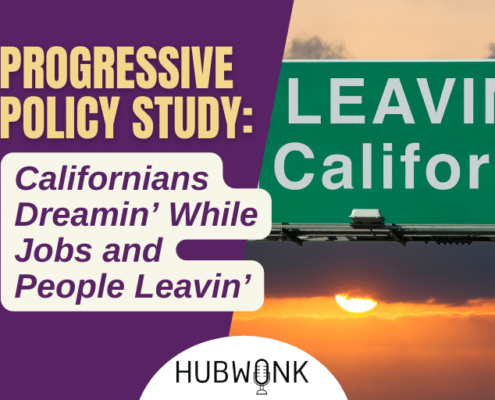
Progressive Policy Study: Californians Dreamin’ While Jobs and People Leavin’

Student Debt Cancellation: Paying For Your Neighbors’ College Education
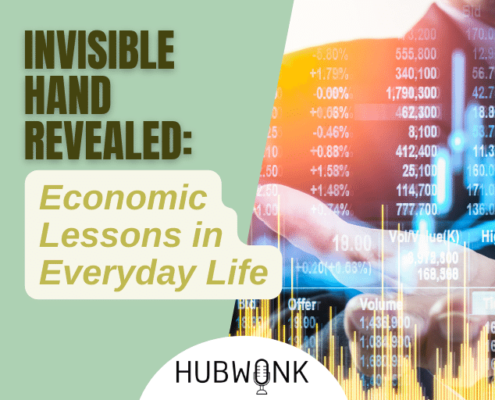
Invisible Hand Revealed: Economic Lessons in Everyday Life
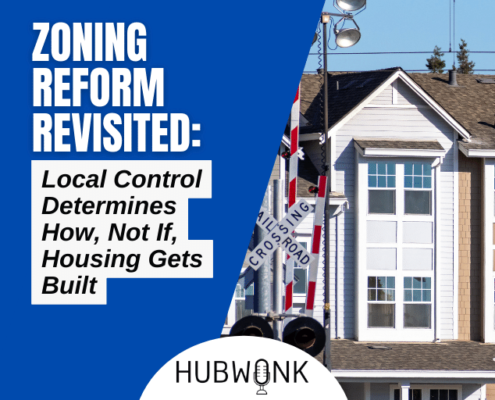
Zoning Reform Revisited: Local Control Determines How, Not If, Housing Gets Built
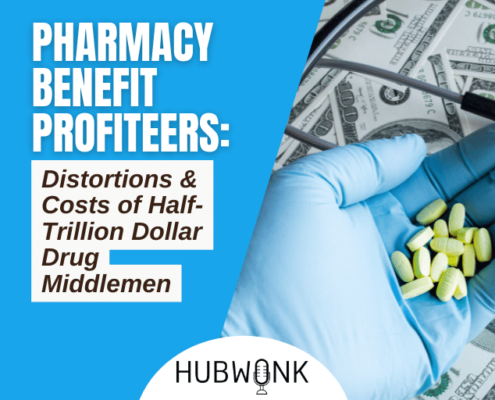
Pharmacy Benefit Profiteers: Distortions and Costs of Half-Trillion Dollar Drug Middlemen
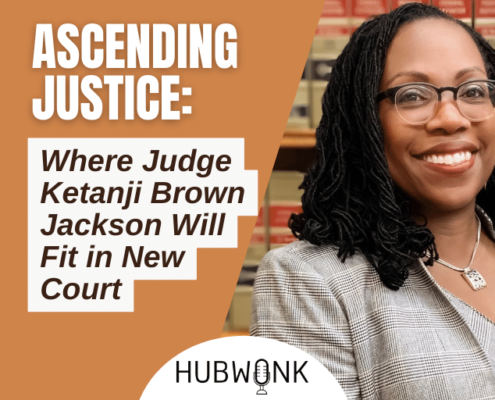
Ascending Justice: Where Judge Ketanji Brown Jackson Will Fit in New Court

Exploiting Charity Drugs: Hospital Program Earns Billions But Forgets Mission
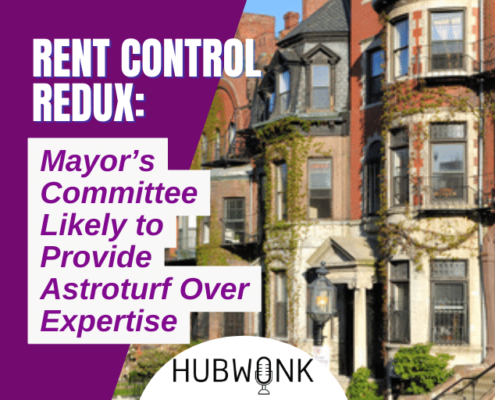
Rent Control Redux: Mayor’s Committee Likely to Provide Astroturf Over Expertise

